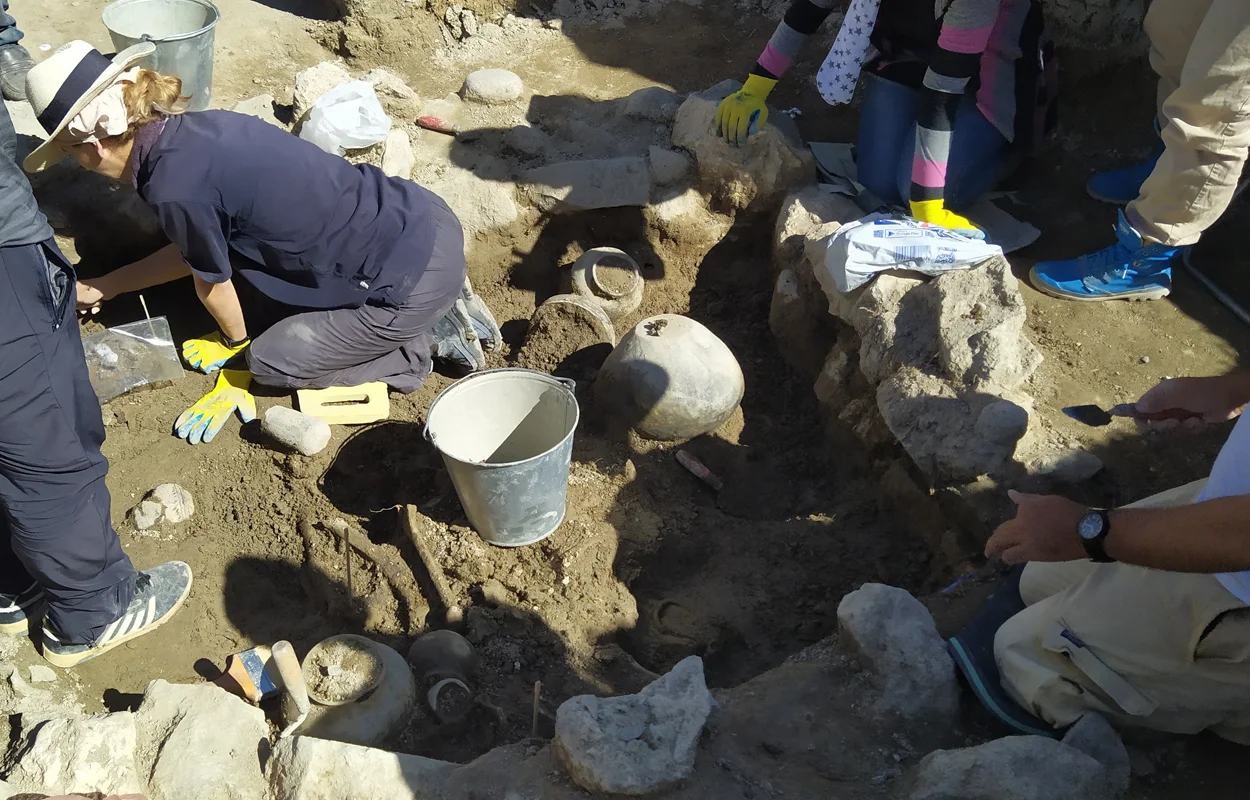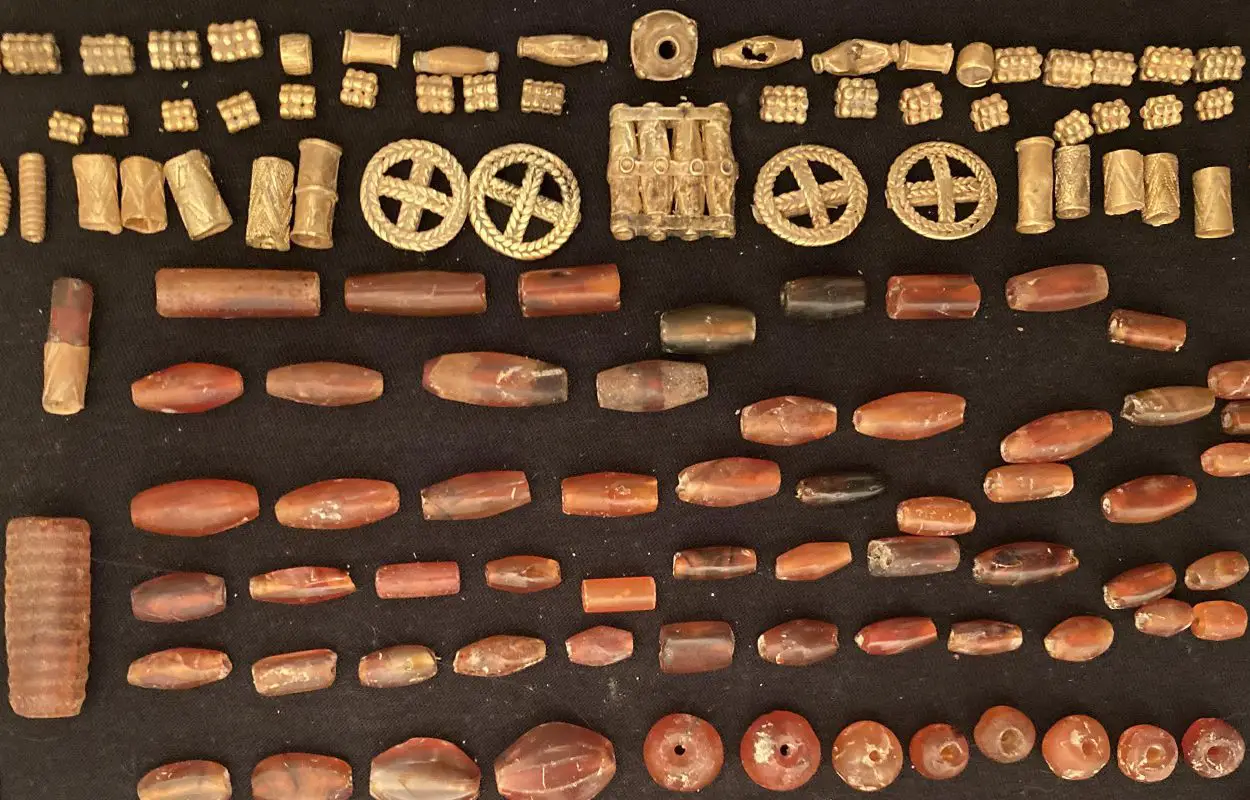A team of Polish and Armenian archaeologists have discovered a tomb at the Metsamor archaeological site, containing ornate golden necklaces that date from the Bronze Age.
The Metsamor archaeological site is located near the village of Taronik, in the Armavir Province of Armenia, where the oldest trace of human settlement dates from the 4th millennium BC during the Copper Age.
In the Bronze Age and Early Iron Ages, the site became an important religious and economic centre, developing into a city with many temples and sanctuaries, fortified by a citadel and cyclopean walls, and an advanced economy based on metallurgical production.
Recent excavations have uncovered a sunken chamber framed by large stones, containing the remains of a wooden burial and two skeletons who died at the age of 30 to 40-years-old during the Late Bronze Age around 1300–1200 BC.

Archaeologists also found over a hundred beads made from gold and carnelian which formed three necklaces, as well as golden pendants, a dozen complete ceramic vessels, and a unique faience flask imported from the Syrian-Mesopotamian borderland.
The tomb was found in a necropolis where over 100 graves have already been examined, with only several having been looted during antiquity.
Metsamor is a protected archaeological site with the status of an archaeological reserve. Excavations in the area have been carried out since 1965, uncovering other examples of gold necklaces and gilded belt fittings with depictions of hunting lionesses.
Header Image Credit : Marek Truszkowski







